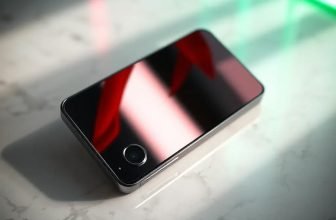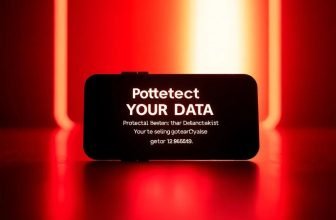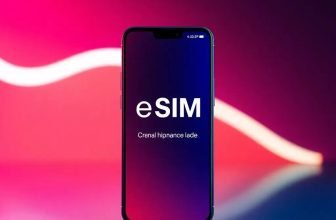
A clogged USB-C port can turn a simple charge into a stubborn wait, leaving you frustrated and disconnected. Dust,lint,and debris often sneak inside unnoticed,disrupting the flow of power and data. But before you reach for expensive repairs or replacements, there’s a quick and safe way to restore your device’s connectivity—no harm done, just a bit of gentle care. in just 60 seconds, you’ll learn straightforward steps to clean your USB-C port effectively, protecting your gadget and extending it’s lifespan.Whether you’re a tech novice or simply pressed for time, this guide makes the process hassle-free and reliable, ensuring your devices stay charged and ready whenever you need them.

Understanding USB-C Port dirt Risks
Everyday use exposes your USB-C port to a surprising range of contaminants that can disrupt charging and data transfer. Dust particles, lint from pockets, and tiny debris often accumulate in the port’s narrow cavity, leading to loose connections or failed charges. Ignoring these buildups risks not only malfunction but potential hardware damage if dirt causes shorts or corrosion over time.
Staying vigilant about these risks keeps your device running smoothly and extends its life. Key contributors to dirt buildup include:
- Pocket lint and fabric fibers
- Dust and dirt from environmental exposure
- Moisture and grime from handling
| Contaminant | Common Source | Potential Issue |
|---|---|---|
| lint fibers | Pockets and bags | Block connection pins |
| Dust | Indoor/outdoor air | Interference with data transfer |
| Moisture | Hands, environment | Corrosion risk |

Choosing the Right Cleaning Tools
When it comes to clearing debris from a USB-C port, precision tools are your best allies. Avoid anything metallic that could damage delicate pins inside the connector. Instead, opt for soft-bristle brushes or compressed air cans designed for electronics, ensuring no moisture or harsh particles enter the port. Using the right tool not only speeds up the cleaning process but also preserves your device’s longevity.
To simplify your choice, consider these essentials for quick, safe cleaning:
- Soft nylon brush – gently removes dust without scratching
- Compressed air – blasts out loose dirt from hard-to-reach spots
- Cotton swabs – ideal for careful surface wipe-downs
- Isopropyl alcohol (70% or higher) – for disinfecting without residue
| Tool | Effectiveness | Price Range |
|---|---|---|
| Soft Nylon Brush | High | £5–£10 |
| compressed Air Can | Medium | £7–£15 |
| Cotton Swabs | Low | £2–£5 |
| Isopropyl Alcohol | High | £4–£8 |

Step by Step cleaning Method
Begin by powering off your device and gathering a few simple tools: a soft-bristle brush, a toothpick or SIM ejector pin, and a can of compressed air. Gently brush around the USB-C port to loosen any dust or debris, then carefully use the toothpick to dislodge stubborn particles lodged inside. Avoid using metal objects to prevent damaging delicate contacts. Finish by blowing short bursts of compressed air into the port to clear out remaining dust without moisture.
Following these steps regularly can maintain reliable charging and data transfer speeds while preventing port corrosion. here’s a quick checklist to keep in mind:
- Power off before cleaning
- Use non-metallic tools for debris removal
- Apply gentle, controlled air bursts
- Perform monthly maintenance for best results
| Tool | Purpose | Tip |
|---|---|---|
| Soft Brush | Loosen dust | Use a clean, dry brush |
| Toothpick | Remove debris | Be gentle and precise |
| Compressed Air | Clear dust | Use short bursts, keep upright |

Post Cleaning Care and Tips
After clearing out debris from your USB-C port, it’s crucial to maintain its condition for smooth performance. Avoid inserting sharp objects or liquids that can cause lasting damage. Instead, keep your device away from dusty environments and store it in a protective case when not in use. Regular gentle cleaning using compressed air or a soft brush can prevent buildup before it becomes an issue.
Here are some simple post-cleaning tips to extend your port’s lifespan:
- Inspect the port for any loose connectors or corrosion
- Avoid forceful cable insertion to prevent wear and tear
- Use certified chargers to reduce electrical risks
- Schedule regular cleaning every 3–6 months depending on usage
| Cleaning Method | Recommended frequency | Best For |
|---|---|---|
| Compressed Air | Every 3 Months | Dust and Light Debris |
| Soft Brush | Every 6 Months | Stubborn Particles |
| Professional Service | Annually | Deep Internal Cleaning |
Q&A
Q: What’s the safest tool to clean a USB-C port?
A: Use a wooden or plastic toothpick to gently dislodge debris. Avoid metal objects that can damage connectors or cause shorts. Soft brushes designed for electronics also work, ensuring you don’t push dirt deeper inside the port.
Q: How often shoudl I clean my USB-C port?
A: Cleaning once every few months is generally sufficient unless you notice charging issues or dirt buildup. Frequent exposure to dust or pocket lint may require more regular maintenance to maintain optimal connection quality.
Q: Can compressed air damage my USB-C port?
A: If used gently and from a short distance, compressed air is safe and effective in clearing dust.Avoid using high-pressure bursts to prevent dislodging internal components or forcing moisture inside the port.
Q: What signs indicate a dirty USB-C port?
A: Difficulty charging, intermittent connection, or slow data transfer speeds often signal debris. Visible lint or dirt inside the port also means it’s time for a quick, careful cleaning to restore performance.
Q: Is professional cleaning worth the cost for a USB-C port?
A: For most users,a DIY cleaning with simple tools suffices. Professional cleaning, typically costing $20-$50, is worth it only if damage or corrosion is suspected, as they have specialized equipment to prevent harm.Q: Can cleaning improve USB-C charging speeds?
A: Yes, removing dust and lint can restore optimal contact between charger and port, perhaps improving charging speed and stability. A clean port ensures efficient power transmission without interruptions caused by debris.
Concluding Remarks
Keeping your USB-C port clean doesn’t have to be a chore—just a quick, careful wipe can restore smooth connections in under a minute.Remember, gentle tools and a steady hand are your best allies for a safe clean. If you found this tip helpful, feel free to share your experiences or ask questions below. And while you’re here, don’t forget to explore our latest phone deals to complement your freshly maintained device.








Great tips! I had no idea that isopropyl alcohol and a soft brush could make such a difference—I’ll definitely be trying this on my devices!
I’ve always been worried about damaging my devices while cleaning them, but this makes it sound so easy and safe! Thanks for sharing!
This is a game changer! I often neglect my ports, but knowing I can quickly clean them without any risk makes me feel much better about maintaining my devices. Appreciate the advice!
This is such a timely post! I’ve been struggling with my USB-C ports not connecting properly, and it’s good to know I can clean them quickly and safely—definitely giving this a try!
This is exactly what I needed! I’ve been dealing with charging issues lately, and I’m excited to give this quick cleaning method a shot—thanks for breaking it down so simply!
Thank you for this insightful post! I’ve been hesitant to clean my USB-C port for fear of causing damage, but your method seems straightforward and safe—I’ll be giving it a go!
Great tips! I’ve always been nervous about cleaning my USB-C port, but this method sounds super easy and effective—I’m definitely going to try it out!
I’m so glad I came across this post! I’ve always feared damaging my USB-C port while attempting to clean it, but your quick and safe method gives me the confidence I need—can’t wait to try it out!
This is a lifesaver! I’ve been so apprehensive about cleaning my USB-C port, but your clear instructions make it seem manageable—can’t wait to see if this improves my device’s performance!
This is fantastic advice! I’ve always been too scared to clean out my USB-C port, but your easy-to-follow steps make it sound so simple and safe—I’m definitely going to give it a try!
I’m really impressed with how simple and safe your cleaning technique is! I’ve always avoided cleaning my USB-C port due to the risks, but now I feel ready to give it a shot—thanks for sharing this useful guide!
This post is a game changer! I’ve been hesitant to clean my USB-C port for fear of ruining it, but your straightforward instructions make it feel so doable—I’m excited to give it a shot!
Absolutely love this tutorial! I’ve always been wary of cleaning my USB-C port because I didn’t want to cause any damage, but your quick and easy guide has given me the confidence to finally tackle it—thanks a million!
What a relief to find such a practical solution! I’ve always been nervous about cleaning my USB-C port, but your concise instructions make it seem so easy and safe—definitely going to try this out!
Wow, this is just what I needed! I’ve been putting off cleaning my USB-C port because I was worried about causing damage, but your clear and concise instructions have made me feel much more confident—can’t wait to try this out!
This tutorial is fantastic! I’ve always been so scared to clean my USB-C port, fearing I’d do more harm than good, but you’ve laid it out so clearly—I’m definitely going to give it a try!
This guide is a lifesaver! I’ve always avoided cleaning my USB-C port due to fear of damage, but your simple and effective steps have given me the confidence to give it a go—thank you for sharing this!
This is exactly what I needed! I’ve been hesitant to clean my USB-C port, worrying I’d mess things up, but your straightforward instructions make it look so easy. Excited to try this out now—thanks for sharing!
This is super helpful! I’ve always been afraid to clean my USB-C port for fear of ruining it, but your step-by-step guide is reassuring and easy to follow—can’t wait to tackle this now, thanks!
This is exactly the guidance I was looking for! I’ve been too anxious to clean my USB-C port, fearing I’d mess it up, but your clear steps make it seem so manageable—thank you for simplifying it for us!